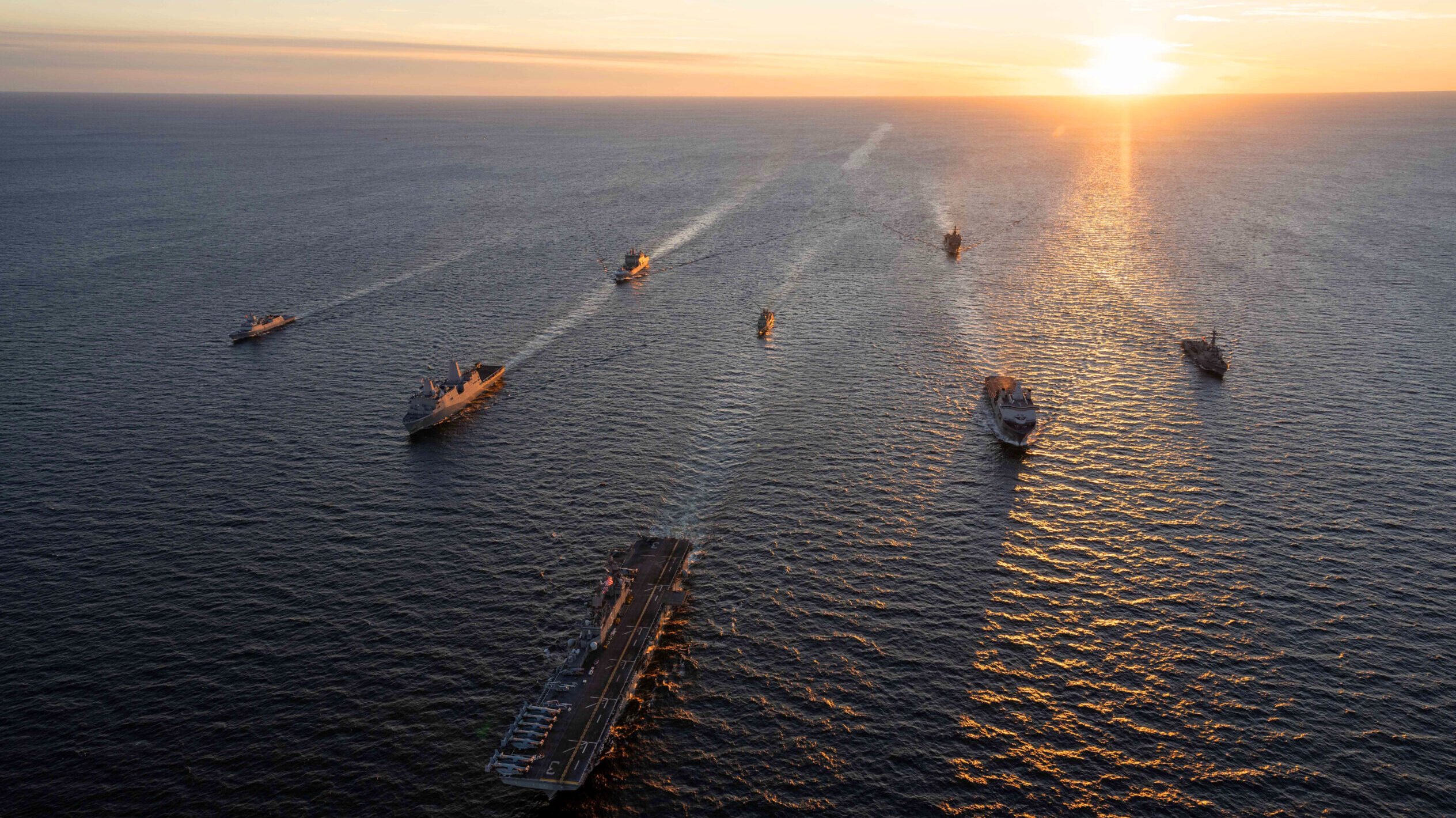
Ships from the US and other allied countries sail in formation. (U.S. Navy photo by Mass Communication Specialist 2nd Class Jesse Schwab)
This report was updated 3/9/2023 at 12:17 pm ET following the unveiling of the Biden administration’s 2024 budget.
WASHINGTON — This morning, before President Joe Biden unveiled his administration’s new budget request, a key top defense-oriented GOP lawmaker was already “decrying” what he says will be “inadequate” Pentagon funding.
“Well, I’m going to begin this week and next week, I think, by decrying the budget numbers that are going to come out” of the Office of Management and Budget, Sen. Roger Wicker, R-Miss., told an industry group during an event on Capitol Hill. “They are going to be inadequate for what our own administration has said we need to do.”
Hours after Wicker’s comments, the White House revealed a budget of $886.4 billion topline for national security and $842 billion for the Pentagon. Last year the Biden administration requested $813.3 billion in discretionary spending for its national security initiatives with $773 billion earmarked for the Pentagon. Congress ultimately boosted that pot up to $857.9 billion for national security with $816 billion funneled to the Defense Department.
Wicker is the ranking member on the Senate Armed Services Committee and was speaking to the Amphibious Warship Industrial Base Coalition, a lobbying group representing companies that collectively build the US Navy’s amphibious ships. For amphibious shipbuilding, the fiscal 2024 budget request comes at a precarious moment. In the previous budget request, the Navy projected it would truncate its anticipated buy of San Antonio-class amphibious transport docks.
Meanwhile, the service recently concluded its joint Navy-Marine Corps assessment of the future amphibious fleet. Although the results were classified, Marine Corps Commandant Gen. David Berger has repeatedly said the minimum number of amphibs needed is 31, a number echoed by some lawmakers on the Hill determined to boost shipbuilding funds.
But Navy Secretary Carlos Del Toro recently said the Navy intends to take a “strategic pause” in purchasing amphibious ships, Defense News reported. That idea is ostensibly dead on arrival with lawmakers, who last year provided funding for long-lead-time materials for amphibious ships despite the projected truncation.
“My commitment to the future of these platforms is unwavering, regardless of the Navy’s intent to strategically pause purchasing,” Rep. Trent Kelly, R-Miss., the new chairman of the House Armed Services seapower and projection forces subcommittee, said at the event today. “This weakens our workforce to do this strategic pause and throws away the experience on the production lines, which at the end cost both the buyer and the builder additional dollars.”
Other lawmakers who spoke at the event today included Reps. Rob Wittman, R-Va., and Michael Gallagher, R-Wisc., as well as Sen. Tammy Baldwin, D-Wisc.
Berger, who spoke at the event on the Hill this morning, deferred a question about the Navy’s strategic pause to Del Toro, adding that the Navy secretary is the person who must articulate the administration’s position on the issue.
But he didn’t mince words about the impact the pause will have on the military.
“The inventory is going to go down, the risk is going to go up,” he said. “The risk meaning our ability as a nation to respond when needed, and sometimes you can’t predict that the risk goes up — that a combatant commander doesn’t have the right tool for the job. That’s the risk.”
Breaking Defense will have full coverage of the Biden administration’s budget rollout starting today and into next week. Check back for the latest. Ashley Roque contributed to this report.






















